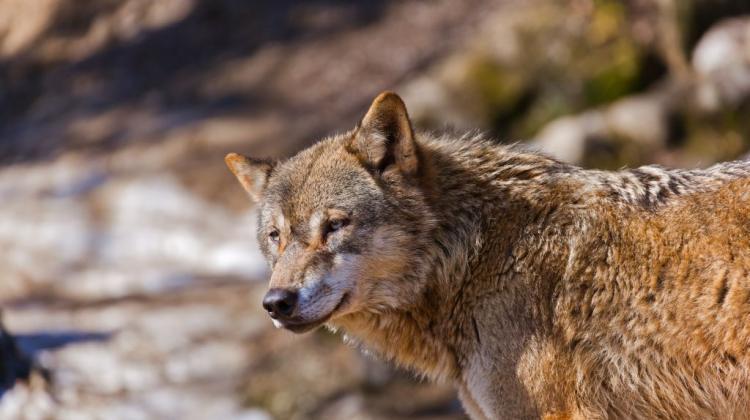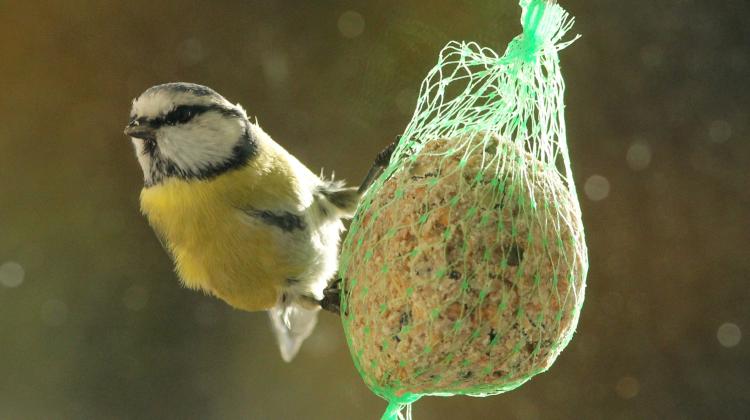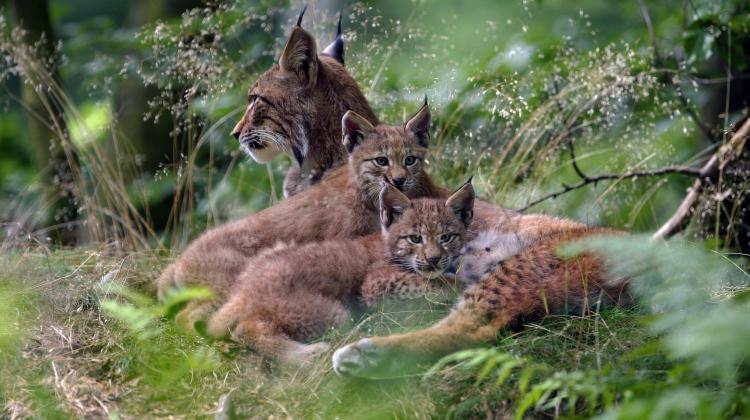Zoologist: Conflicts between humans and large species of animals exist, but they can be mitigated
 Photo: Fotolia
Photo: Fotolia
Conflicts between humans and large species of animals such as elk or wolf do happen, but they are not dramatic and we know how to mitigate them, says Prof. Rafał Kowalczyk, director of the Mammal Research Institute of the Polish Academy of Sciences in Białowieża. He adds that the wolf has important functions in the ecosystem and is an ally of man.
Last Wednesday, Sławomir Izdebski of the Farmers and Farmer Organisations Union said that there were too many wolves and elks in Poland, and called for reducing their population, because these animals were causing losses for farmers and the hunting economy. He noted that the wolf population had already exceeded 3,000 animals, while - as he said - according to experts, in Poland it should be at the level of 500 animals. Similarly in the case of elks. It is estimated that there are about 30,000 of them, and according to Izdebski, there should not be more than 9-10 thousand.
According to the trade unionist, an excessively large wolf population means that these animals more often attack forest and farm animals (for example sheep) or dogs. He estimated that the resulting losses could amount to approx. PLN 60 million annually. As for the elk, he added that there were more and more road accidents involving these animals, and that elks were destroying forests by gnawing on trees.
According to the director of IBS PAN in Białowieża, the populations of both species in Poland are smaller. There are approx. 20,000 elks, and the number of wolves does not exceed 1.2 thousand animals.
"As far as elks are concerned, inventories from recent years indicate that there may be more than 20,000 of them in Poland, but these estimates are based on so-called trial runs, not adapted for species such as elk: present in low densities. In the last dozen years, during the elk hunting moratorium, there has been an increase in its population" - Prof. Kowalczyk says.
In turn, the wolf population, almost completely eradicated in Poland in the 20th century, has been restored after being covered with protection 1998, and wolves are returning to their previous territories. "Currently, there is no reliable information on their numbers, only the Statistical Office data published in statistical yearbooks. The Chief Inspectorate for Environmental Protection, the Ministry of the Environment agency responsible for environmental monitoring, commissioned a private company to perform a wolf count in Poland. We are waiting for the official results of this count" - Dr. Robert Mysłajek from the University of Warsaw and the Association for Nature WOLF emphasises in an interview with PAP.
Scientific models developed in the Mammal Research Institute PAS indicate that the Polish environment can "accommodate" 1,400-1,500 wolves. "I do not think that this number has been exceeded. In the case of wolves, there is no excessive population growth, because packs occupy separate territories. The further spread of the wolf takes place by re-colonising the territory of Poland and gradually spreading westward, to Germany, Denmark, the Netherlands and other places where they will find suitable habitat conditions, mainly forests. Information that there could be 3 thousand wolves in Poland, is over-inflated" - says Prof. Kowalczyk.
Wolves and elks are treated as pests by farmers or foresters because their presence may mean losses of livestock or damage to agricultural and forest crops. Every now and then, postulates regarding the possibility of culling them return.
"There certainly are damages associated with both these species, but the level of conflict is not drastic. There are also solutions that allow to mitigate conflicts, these mechanisms work well" - emphasises Prof. Kowalczyk.
Compensations are paid for losses caused by wolves. "But they do not exceed 5 percent of all compensations paid for protected species (the majority of these compensations concerns to beavers). According to data from 2014-15, these compensations amounted to PLN 700-800 thousand on a national scale. It could be a bit more now" - he says.
According to the law, in certain cases (when the damage is severe) it is possible to cull wolves and such permits are issued in justified cases.
Dr. Mysłajek reminds that the European Commission has met the expectations of farmers and introduced the possibility of 100 percent compensation from EU funds for expenditure on protection of herds from predators. At the same time, the Environment and Agriculture Commissioners wrote in a special letter to the Member States that culling may only be used in exceptional cases, and the priority is to adequately protect the herds.
In turn, the elk is a game species, which is now subject to a moratorium (its aim is to rebuild the population after excessive hunting reduction in the 1990s). Prof. Kowalczyk reminds that farmers can claim compensation for the crops or private forests destroyed by elk in courts. If such compensation is awarded, the voivode pays it. According to Prof. Kowalczyk, the mechanism can be simplified by formulating clear regulations (similar to those for protected species) that will facilitate obtaining compensation. "We should not forget that wild animals are part of natural ecosystems and we must take their nutritional needs into account" - he points out.
"As scientists, we have said that culling could be a tool for managing elk populations, but it must be a very thoughtful decision, based on scientific knowledge. Locally, where densities are high and damages severe, such culling could be justified to limit the scale of the conflict or change the behaviour of elks, but we can not allow hunting in a large part of the country without special control, because in some areas the elk population densities are low and it may cause another population collapse" - the expert warns.
Professor Kowalczyk adds that road accidents involving elk happen more often in areas where there are fewer animals, and people are not prepared to encounter them on the road. In areas where there are a lot of elk, the number of collisions in relation to the number of elk is lower, because various mechanisms are introduced to prevent collisions: roadside deforestation, warning signs, speed limits.
The director of the Mammal Research Institute PAS reminds that the subject of shooting elk or wolves returns from time to time. "The campaign concerning these species presents them in a negative light and is designed to justify opening the shooting of elk and the introduction of wolf shooting. However, as far as I know, the Ministry of the Environment is not working on restoring elk hunting or wolf hunting. I hope that the ministry approaches this subject rationally" - emphasises the zoologist from the Polish Academy of Sciences.
He adds that there are many good specialists in Poland who study these animals, and a possible discussion on the management of populations of both species should be based on scientific records and expert knowledge. He remarks that there are voices for culling in the scientific community.
Scientists point out that when it comes to wolves, one must remember about their important role in ecosystems. "The wolf has a positive role in the environment. The number of ungulate mammals increases throughout Europe. By limiting the populations of species that can also cause significant damage, the wolf is an ally of farmers. It not only kills ungulates, but also affects their behaviour with its very presence, creating a landscape of fear In areas where wolves are present, ungulates spend more time being vigilant, they feed less, and the forest recovers better" - emphasises Kowalczyk.
PAP - Science in Poland, Anna Ślązak
zan/ agt/ kap/
tr. RL
Przed dodaniem komentarza prosimy o zapoznanie z Regulaminem forum serwisu Nauka w Polsce.


















